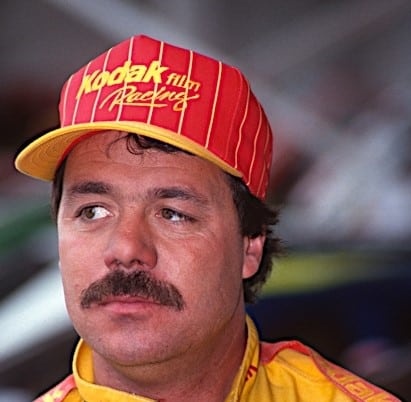The 1991 Daytona 500 is likely best remembered as a coming-out party for Morgan-McClure Motorsports. The Abingdon, Va.-based team, which had only won once previously, scored the victory with Ernie Irvan.
But while Irvan and the Kodak team were rightfully overjoyed, it was far from the only story that cool February day.
Much was a big unknown entering the race since rule changes had rendered pit stops different at the beginning of 1991 than they were ever were previously.
At the time, there was no pit road speed limit. You were fully within your rights to charge down pit road like your trousers were on fire to get to your stall as fast as possible.
Such a thing could have disastrous consequences. The 1990 season saw two separate pit road crashes under caution. The worst of the two occurred in the season finale in Atlanta Motor Speedway, when Ricky Rudd spun and crashed into Bill Elliott’s crew, killing rear tire changer Mike Rich.
As a result of Rich’s death, big changes were at hand for the 1991 Daytona 500. Changing tires under caution for any reason were banned, even if you had a flat. Everything else was fair game, though. CBS Sports’ Ned Jarrett explained the new rules prior to the start of the race.
These new rules came in addition to stricter policing of things like blend line rules. That caught out a number of drivers in the race.
One rule change here was permanent immediately. This was the first NASCAR Cup Series race with pit signs displayed on poles from behind the wall, replacing the crewmember standing on the hot pit lane with the pit sign you might remember if you’ve seen Days of Thunder. Prior to the changes, this person may have been the most vulnerable member of the pit crew since they would literally have cars at Daytona International Speedway blasting past them at 100 mph while they stood there, unprotected.
Did the new rules affect the race? Yes — substantially.
Drivers being unable to change tires under yellow meant that they would either pit for fuel only, or outright not pit under yellow at all and do all their pitting under green. Drivers that got involved in minor incidents with minimal sheet metal damage were out of the hunt because they either copped one-lap penalties for changing tires under yellow or blew tires trying to hold on until they could legally change them. Or both.
Hut Stricklin, who ran well early…
Click Here to Read the Full Original Article at …

